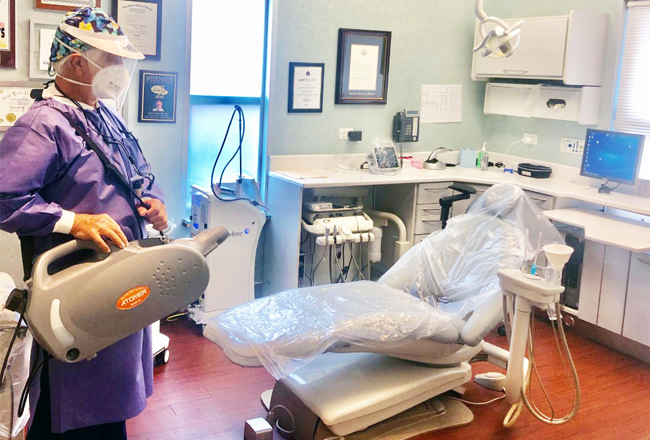With the June 30 deadline for applying for a Paycheck Protection Program (PPP) loan extended to Aug. 8, businesses are still trying to decipher how best to proceed under the Paycheck Protection Program Flexibility Act.
 Signed into law on June 5, the Flexibility Act is designed to clarify some questions about the original PPP, as well as adjusting the amount of a given loan that must be used for payroll down to 60% from the original 75%. While most businesses welcome the latter proviso, however, there is still some confusion over various aspects of the loan program, administered by the Small Business Administration.
Signed into law on June 5, the Flexibility Act is designed to clarify some questions about the original PPP, as well as adjusting the amount of a given loan that must be used for payroll down to 60% from the original 75%. While most businesses welcome the latter proviso, however, there is still some confusion over various aspects of the loan program, administered by the Small Business Administration.
The 60/40 split ”” which allows business owners more money for such expenses as rent, mortgages, utilities and loan interest ”” along with an extension of the covered period for loan forgiveness from eight to 24 weeks after loan origination (or Dec. 31, 2020, whichever occurs first) will have a “big impact” on restaurants, particularly hard hit by COVID-19, said Scott Dolch, executive director of the Connecticut Restaurant Association.
“A lot of our members just reopened (on June 17, in accordance with Phase 2 of Connecticut”™s reopening strategy),” Dolch said. Although eateries have had the option of offering delivery and curbside service throughout the pandemic, he noted, indoor dining is where most of them make their money.
Under the second phase, restaurants can offer indoor dining at no more than 50% capacity ”” still a money-losing proposition for many, Dolch said.
Whether that figure will be revised upward in phase 3, which was put on hold by Gov. Ned Lamont on July 6, remains uncertain.
“We”™ll see how it plays out,” Dolch said. “There”™s still the issue of consumer confidence ”” we”™re nowhere near the normal levels of customers coming out right now ”” and while the weather”™s been mostly great, there”™s still that threat of a second wave.
“The PPP has been helping in certain ways,” he continued, “and the SBA and Treasury (Department) have been very receptive and responsive to a lot of small businesses. But we”™re still going to be one of the last to reopen our doors for inside business.”
To date, around 1,400 of the restaurant association”™s 8,500 members have self-certified with the Department of Economic and Community Development that they are meeting government mandates, Dolch said. Nevertheless, the National Restaurant Association has estimated that 25% to 30% of the country”™s eateries may not survive the pandemic, which translates to about 2,000 in Connecticut.
But the Flexibility Act is “giving some sense of hope,” he said. “It”™s a little bit of a Band-Aid that can allow restaurants some sense of loan forgiveness. Time will tell, but restaurateurs are fighters.”
Similarly, the new flexibility rules will help small-business owners in particular, said Valeria Bisceglia, education and training programs adviser at the Connecticut Small Business Development Center.
“I was speaking to a business owner the other day who said he was basically having to choose whether to pay his utilities or shut down,” she said. “The extra time should make a huge difference.”
The costs of training a new employee can also be somewhat ameliorated by the 24-week proviso, Bisceglia said. “Otherwise you”™re creating a ripple effect, where you”™re losing productivity and therefore money, over a much shorter period.”
On June 22, the SBA issued new Interim Final Rules on the Flexibility Act to provide further clarity. That guidance includes resolving questions about whether a borrower has to choose to apply for PPP loan forgiveness after either eight or 24 weeks ”” the guidance says they can apply anytime between those two ”” and further clarifies the process of applying for PPP loan forgiveness and other issues.
Nancy Hancock, an attorney with Westport”™s Pullman & Comley, said that the original confusion over the PPP ”” and the ongoing uncertainties that have necessitated further guidance ”” can be attributed to both the fact that the original bill “had to be produced in a hurry” and that the PPP was applied to the SBA”™s long-extant 7(a) loan program, leading to some inevitable snafus.
One of those was 7(a)”™s out-of-date definition of a full-time employee as one who works 32, rather than today”™s standard 40, hours a week. As a result, “people were uncertain which of the 7(a) rules would be imparted to the new PPP,” Hancock said.
While the latest SBA guidance is “extremely helpful,” Hancock said business owners are still faced with digesting its 34 pages, most of which is written in legalese. Even so, the clarity about 8 or 24 weeks should be helpful to those companies already close to meeting the forgiveness rules.
In general, Hancock said, her clients are “thrilled to bits” with the Paycheck Protection Program Flexibility Act.




















